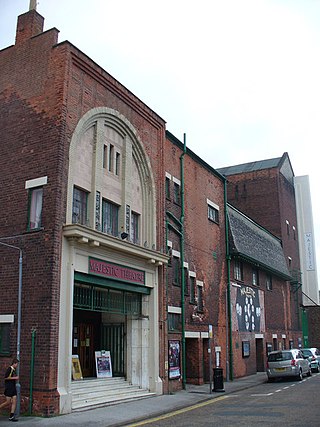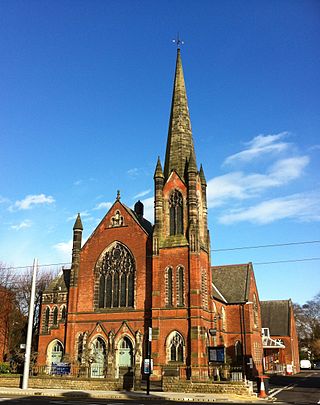
Attenborough is a village in the Borough of Broxtowe in Nottinghamshire, England. It forms part of the Greater Nottingham area and is 4+1⁄2 miles (7.2 km) to the south-west of the city of Nottingham, between Long Eaton and Beeston. It adjoins the suburbs of Toton to the west and Chilwell to the north. The population of the ward, as at the 2011 Census, was 2,328.

Frederick Ball LRIBA was an architect based in Nottingham. He was Sheriff of Nottingham from 1906–07, and Mayor of Nottingham from 1913–1914.

Harry Gill LRIBA was an architect based in Nottingham.

Walter Owen Hickson was an architect and surveyor based in Nottingham.

Alfred John Thraves FRIBA was an architect based in Nottingham who specialised in cinema design.
St John's Grove, Beeston is a conservation area in Beeston, Nottinghamshire.

Charles Nelson Holloway was an architect based in Nottingham.

Arnold Plackett LRIBA was an 20th century architect based in Long Eaton.

Joseph Warburton LRIBA MRAIC was an 20th century architect based in Beeston, Nottinghamshire and Regina, Saskatchewan.

High Road, Beeston is a pedestrianised shopping street in Beeston, Nottinghamshire. It runs from Beeston Square to Humber Road.

Chilwell Road, Beeston is street in Beeston, Nottinghamshire. It runs from its junction with High Road, Beeston in Beeston Square to the Hop Pole public house.

Beeston Fields Drive is a street in Beeston, Nottinghamshire, England. It runs from its junction with Wollaton Road, Beeston, to Cow Lane, Bramcote.

George Francis Grimwood LRIBA was an 20th century engineer and architect based in Nottingham.

James Huckerby was a 19th-century builder and architect based in Beeston, Nottingham.

John Frederick Dodd LRIBA was an architect based in Long Eaton, Derbyshire.

John Bowley LRIBA was an architect and engineer based in England who worked mainly in Beeston, Nottinghamshire and Hastings.

Alexander Wilson LRIBA was an architect based in Nottingham. Some of his most significant work include the 900 houses built on the Beeston Rylands estate in the late 1930s.

Thomas Woolston was an architect and builder.
Douglas Leonard Booth was an architect, surveyor and civil engineer based in Beeston, Nottinghamshire.

Field Weston was an architect based in Nottingham.























